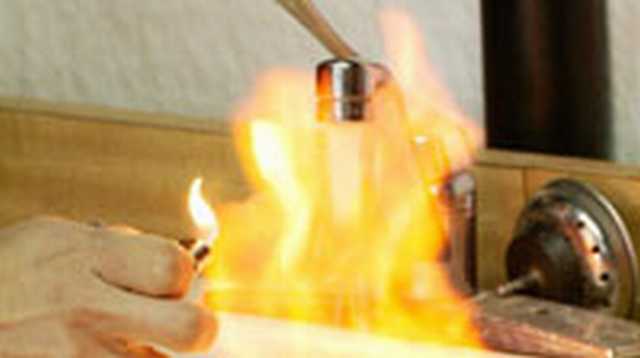
In a scene from the Academy-Award nominated documentary GasLand, a Pennsylvania resident ignites the water flowing from his kitchen tap, a trick he could not perform before natural-gas fracking came to a field near his.
It has been a terrible month for the natural gas industry. From another well blowout in Pennsylvania to an emerging water war in Texas, from a new study by the EPA that scrapes some of the greenwash off the image of “natural” gas to an Academy Award nomination for an anti-fracking documentary. it’s been a total snafo (“situation-normal-all-fracked- over”).
As portrayed by the industry, “natural” gas is a clean fuel, plentiful in North America, our ticket to energy independence and prosperity. And fracking, or hydraulic fracturing, is technology’s gift to an industry that had just about run out of recoverable gas. The technique involves injecting millions of gallons of water and dozens of chemicals into shale formations a mile underground at such high pressure that they blow the shale apart and release the gas trapped in the rock. Overnight, fracking increased the estimates of available gas in the US to somewhere north of Saudi Arabia’s oil puddle.
A lot of paint has been coming off that pretty picture, however, never more so than in the past few weeks, during which:
- On the afternoon of January 17, a valve failed on a fracking well southeast of Mansfield, PA, owned by Talisman Energy. The well blew out and for nearly four hours spewed into the air a gusher of natural gas, sand and fracking fluid — a solution of sand and up to 80 chemicals, many of them toxic and/or carcinogenic (The precise mix used is treated as a trade secret by the frackers, who desperately do not want the particulars to become general knowledge). The good news is that no spark occurred to touch off the gas (which was eventually brought back under control), and that the fluids were, apparently, largely contained. Both matters of pure luck. Pennsylvania’s Department of Environmental Protection is calling at a “serious incident that could have caused significant environmental harm,” and is pursuing an investigation that could lead to civil penalties. Last year the DEP cited Talisoman for 151 violations at its 150 fracking wells in Pennsylvania (up from 50 the year before).
- The San Antonio Current published a scathing report this week on the ravages of the fracking boom in south Texas. The newspaper profiled people who are making more money providing water to the frackers — each well needs more than three million gallons — at the expense of the depleted aquifers that provide water to cities and farms. One well dedicated to fracking was pumped dry in 90 days. The Current detailed how the fracking boom is competing with the building boom for water in a region suffering from a drought that is expected to worsen as global climate change proceeds.
- A new evaluation from the EPA drastically changes the calculations of how much better natural gas is for the environment. The EPA raised its estimates of methane gas emissions from fracking wells — by a multiple of 9,000. It doubled its previous guess of how much methane (the most potent greenhouse gas) leaks from pipelines and is deliberately vented from gas wells (altogether, the equivalent of the emissions from 35 million cars). All of which cut in half the official estimate of how much cleaner natural gas is as a fuel than coal. It used to be the mantra that gas yielded half the greenhouse gases. Now we’re down — or is it up? — to three-quarters.
None of this, of course, is likely to slow the fracking juggernaut. Talisman alone invested nearly a billion dollars, in Pennsylvania alone, last year. And it was hardly the only, not even the biggest, player in the state. (Nor was its blowout the worst or the biggest of the past year: in June, an EOG Resources Inc. rig went rogue for 16 hours, and avoided competing for headlines with the BR oil spill only because for that amazing length of time no spark was struck near the venting gas.)
As for Texas, according to the Texas Groundwater Association, the 300,000 acre-feet of water (yes, that’s acres covered with a foot of water) that 20,000 fracking wells are expected to use in the next decade or so is, to quote a recent newsletter, “not that significant” when stacked up against the expected $100 billion in profits, described by a spokeman as a “benefit for the region.” Assuming, of course, that the region can learn to drink dollar bills.